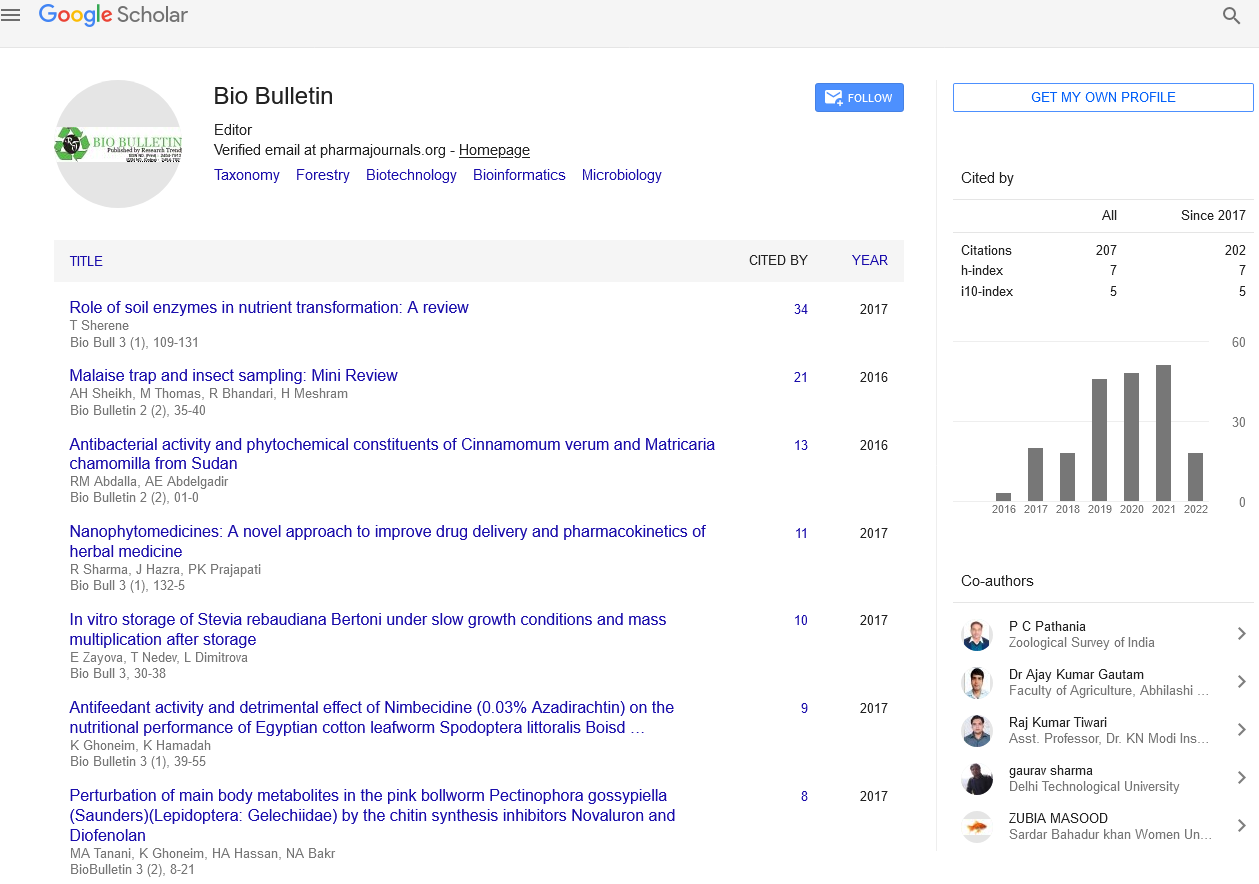Transmission Mechanism of Stimuli to Effector Molecules through Signaling Cascade
Perspective - (2022) Volume 8, Issue 2
Description
Cells must be able to receive and analyses signals from outside their borders in order to respond to changes in their immediate environment. Individual cells frequently receive multiple impulses at the same time, which they then combine into a single action plan. Cells, on the other hand, are not merely targets. They also send messages to nearby and faraway cells.
Chemical signals make the majority of cell signals. Prokaryotic organisms, for example, contain sensors that detect nutrients and guide them toward food sources. Growth factors, hormones, neurotransmitters, and extracellular matrix components are just few of the chemical signals that multicellular organisms use. These compounds have local impacts or have the ability to travel large distances. Neurotransmitters, for example, are a type of short-range communication chemical that travels between nearby neurons and muscle cells. To reach their objectives, other signalling molecules must travel much further. Follicle-stimulating hormone is a hormone that travels from the mammalian brain to the ovary, where it triggers egg release.
Mechanical stimuli also have an effect on some cells. Sensory cells in the skin respond to touch pressure, whereas comparable cells in the ear respond to sound wave movement. Furthermore, specific cells in the human vascular system detect fluctuations in blood pressure, which the body employs to keep the cardiac burden stable.
Recognition of signals
Receptor proteins in cells attach to signaling molecules and trigger a physiological response. Distinct chemicals elicit different responses are received from different receptors. Insulin receptors bind insulin; nerve growth factor receptors bind nerve growth factor. In fact, cells have hundreds of different receptor types, with differing populations of receptors in different cell types. Cells are sensitive to events in the atmosphere because receptors can respond directly to light or pressure.
Receptors are transmembrane proteins that attach to signalling molecules outside the cell and then relay the signal to internal signaling pathways via series of molecular switches. G-protein-coupled receptors, ion channel receptors, and enzyme-linked receptors are the three types of membrane receptors.
Response of cells to signals
Cell changes shape which triggers a cascade of metabolic processes within the cell when a receptor protein receives a signal. Intracellular signalling pathways also known as signal transduction cascades, it enhances the message by producing multiple intracellular signals for each attached receptor.
The creation of tiny molecules known as second messengers which initiate and coordinate intracellular signaling pathways and triggered by the activation of receptors. Cyclic AMP (cAMP) is a frequent second messenger involved in signal transduction. The enzyme adenylyl cyclase, which is found in the cell membrane, produces cAMP from ATP. Adenylyl cyclase activation can result in the production of hundreds or even thousands of cAMP molecules. The enzyme Protein Kinase A (PKA) is activated by these cAMP molecules, which then phosphorylates various protein substrates by attaching phosphate groups to them. The phosphorylation reactions drive both short term and long term responses in the cell, and each step in the cascade amplifies the initial signal.
Phosphodiesterase is the enzyme that breaks it down; other second messengers include Diacylglycerol (DAG) and Inositol 1, 4, 5-triphosphate (IP3), both of which are generated by the membrane protein phospholipase. IP3 causes Ca2+, a second messenger, to be released from intracellular storage. DAG and Ca2+ work together to activate a Protein Kinase C enzyme (PKC).
Effect of signals in cell function
Phosphate groups are transferred from ATP molecules to protein molecules by protein kinases like PKA and PKC. The amino acids serine, threonine, and tyrosine are particularly prevalent phosphorylation sites in proteins. Many enzymes involved in intracellular signalling pathways are controlled by these phosphorylation events. The addition of phosphate groups to enzymes produces a conformational shift, which can either promote or inhibit enzyme function. Protein phosphatases then remove the phosphate groups from the enzymes when they are needed, reversing the influence on enzymatic activity.
Author Info
Michel Murphy*Citation: Murphy M (2022) Transmission Mechanism of Stimuli to Effector Molecules through Signaling Cascade. Bio Bulletin, 8(2): 01-02.
Received: 02-Jun-2022, Manuscript No. BIOBULLETIN-22-66757; , Pre QC No. BIOBULLETIN-22-66757(PQ); Editor assigned: 07-Jun-2022, Pre QC No. BIOBULLETIN-22-66757(PQ); Reviewed: 28-Jun-2022, QC No. BIOBULLETIN-22-66757; Revised: 05-Jul-2022, Manuscript No. BIOBULLETIN-22-66757(R); Published: 15-Jul-2022, DOI: 10.35248/2454-7913.22.8.095
Copyright: This is an open access article distributed under the terms of the Creative Commons Attribution License, which permits unrestricted use, distribution, and reproduction in any medium, provided the original work is properly cited.

